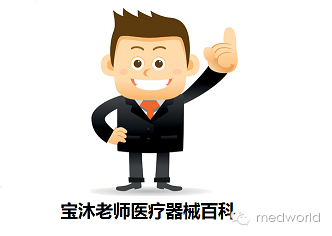
来源: Mobile Health
There has been plenty of talk about patients becoming consumers of healthcare and their expectations for medical products shifting. Consumer-med, that blurred area between consumer products and medical devices, is a challenging field. Yet, it’s one of the most exciting areas of convergence, according to Kevin Young, SVP, Product Experience at Continuum.
“I’m personally and professionally fascinated by this overlap, this growing category of products that are between medical devices and consumer products,” Young told MD+DI.
How can medical device companies interested in the consumer side of healthcare thrive? Young believes the key to success is partnering. “The model of partnerships is . . . the greatest opportunity for success,” he said.
Young pointed to consumer companies facing the hurdles with which medical device companies are already well-acquainted. For instance, he said, for a consumer company it “is too great of a mountain to try to understand all of the areas around regulatory.”
“[Consumer companies] don’t necessarily move faster as an organization, but of course without the regulatory challenges that the medical industry faces, they just naturally have a faster time to market. That creates a certain expectation and almost a tendency to be impatient,” Young explained.There are plenty of challenges facing consumer health companies, as Young explained in an October 2016 article forEntrepreneur. Even with the right partner, obstacles can arise. Some of this can come from different company cultures.
Partnering companies can address these varying expectations by using meetings to guide each other through the various steps and aligning timelines.
Then again, perhaps the longer lead times required because of regulation may be disappearing in some cases. Pointing to the recent FDA announcement that it would consider creating a class of over-the-counter hearing aids, Young said that deregulation could be a trend in the consumer-med segment.
"I think you’re going to start to see that more broadly, that some of the regulation barriers will be lowered, so these over-the-counter consumer health products can just become more accessible to people,” he said.
Medical device makers interested in the consumer-med segment also must shift their approach to understand their buyer. Medical devices aren’t usually purchased directly by the patient, but consumer-med products will be. Young advocates for ethnographic research, including time with the consumer in their own homes.
“The reason for that is, you don’t just learn how they’re using the product or device that they’re using, but you can look around their home and can understand more about their family and their lifestyle,” Young said. “That’s a higher level of empathy and values-based design than just solving the immediate problem with a product or service.”
In practice, this has led to product designs that incorporate the needs of not only the user, but also the user’s family members, he explained. “As medical companies start to adopt some of these processes and tools, they can go from thinking about their customer base as a patient to a consumer.”
As some medical device companies enter the consumer-med segment, other changes might take place. One challenging shift for some product-based companies is the need to evolve into service-based companies. That evolution can require a novel business model and is often disruptive and disorienting to these companies, Young said—and not just because new personnel and experiences may be needed.
“The bigger challenge that they face is the legacy tendency to be object-focused and breaking that internal corporate mental model to thinking beyond selling objects to individuals to solve problems, to that higher-level model,” he said.
Young is enthusiastic about the future of the consumer-med field, particularly technology that is proactive and doesn’t rely heavily on manual user input. “You’re going to see these increased applications of technology . . . that [don’t] require a lot of effort by the end user to assess their data, to make decisions about life style changes,” he said. “I think that’s the next level of sophistication—the products and services that we’re all going to be using in the next five to ten years, I’m sure.”
Marie Thibault is the managing editor at MD+DI. Reach her at [email protected] and on Twitter @MedTechMarie.
===============================
【免责声明】:medworld刊载上述内容,对文中陈述、观点判断保持中立,不对所包含内容的准确性、可靠性或完整性提供任何明示或暗示的保证。如果您认为我们的授权或者来源标注与事实不符,请告知我们,我们将与您积极协商解决。谢谢大家的关注。














